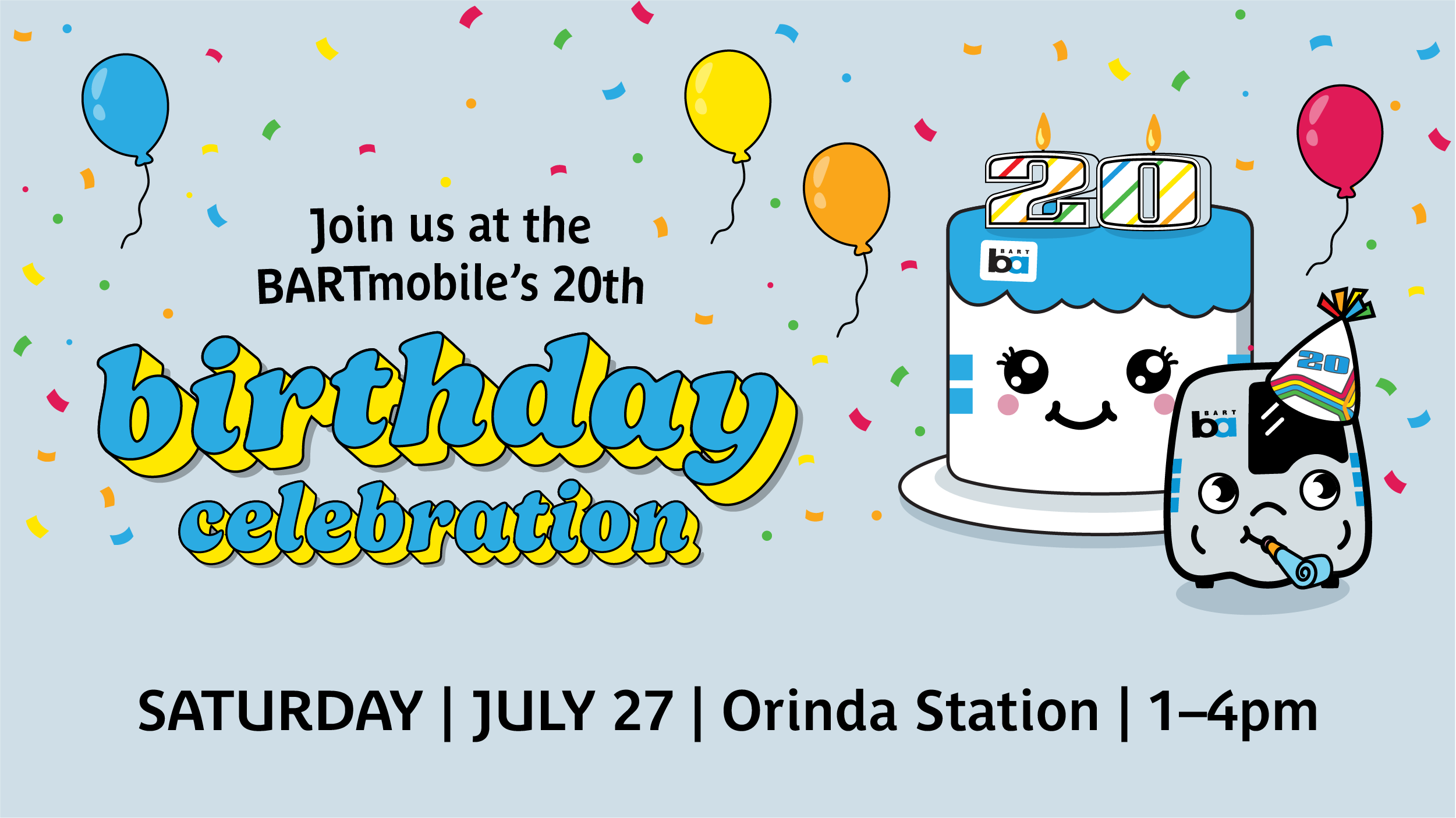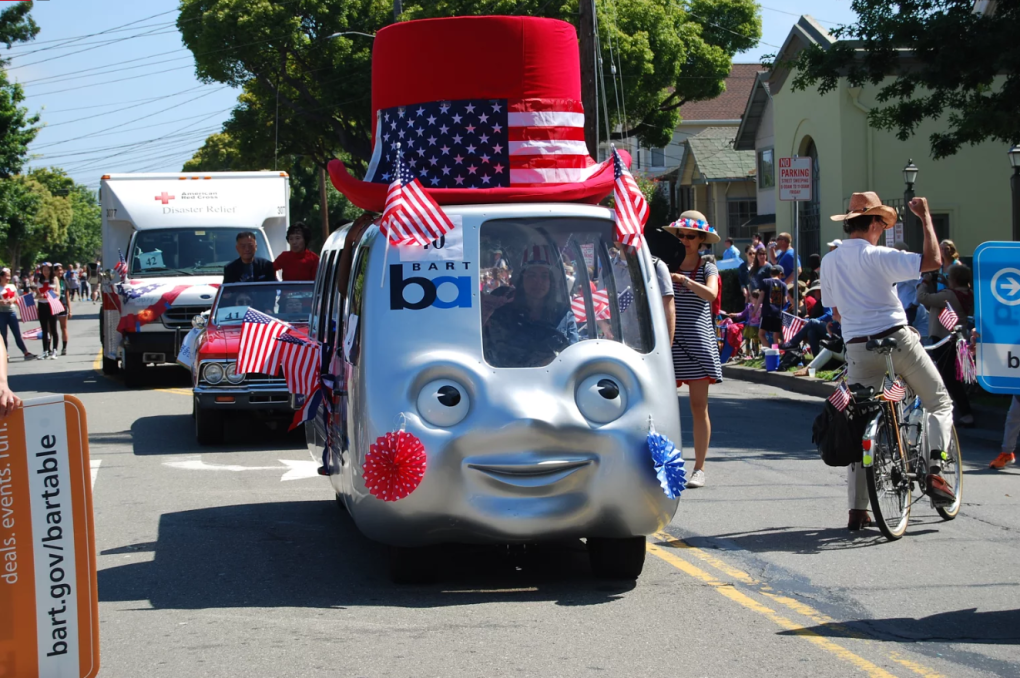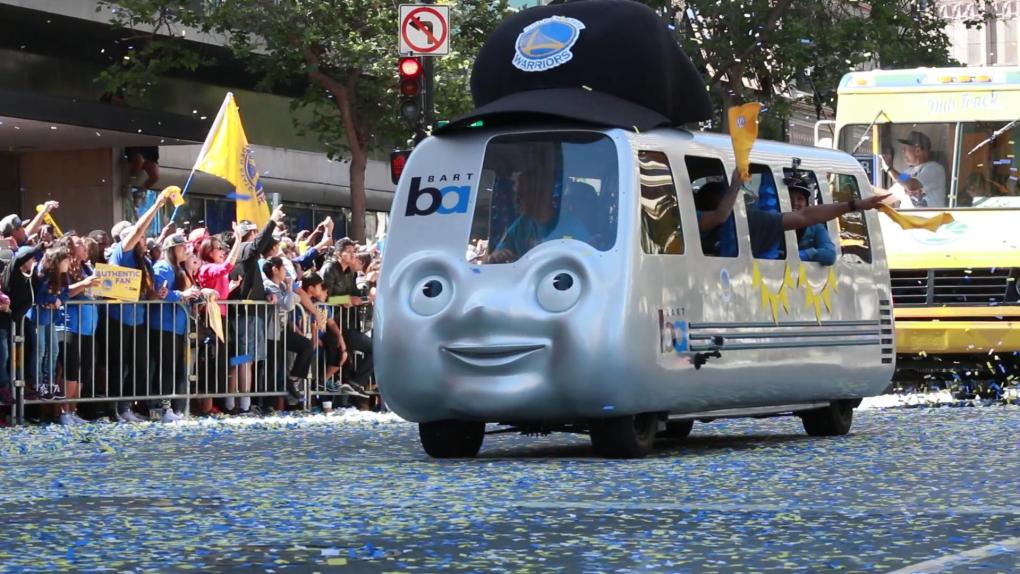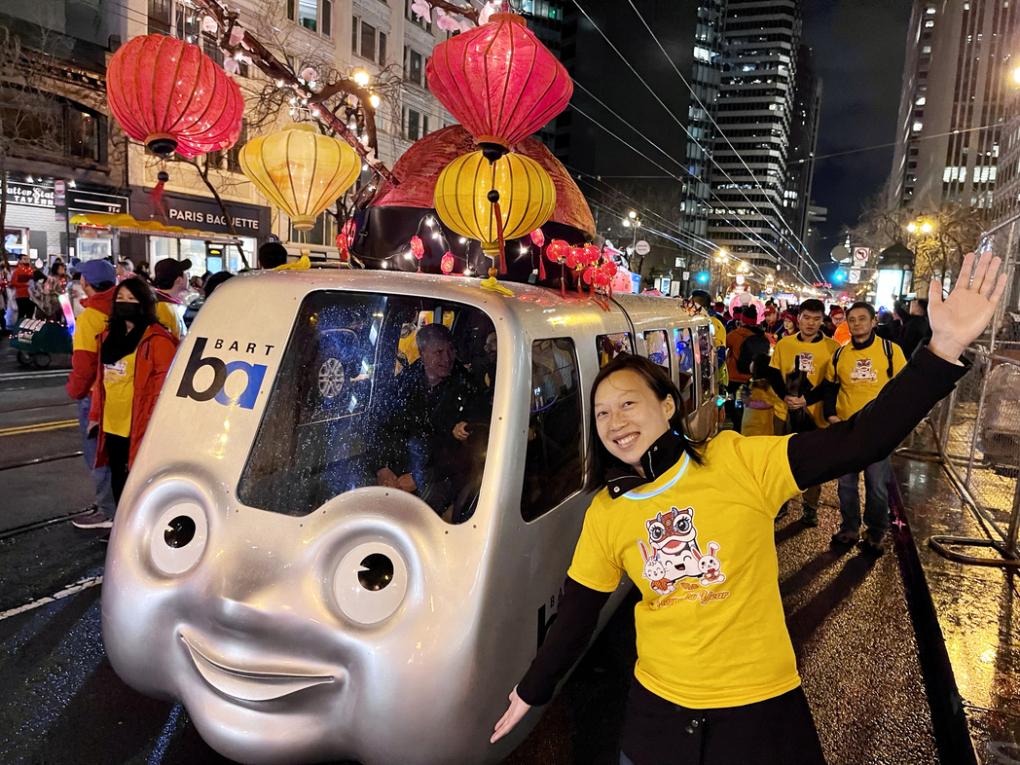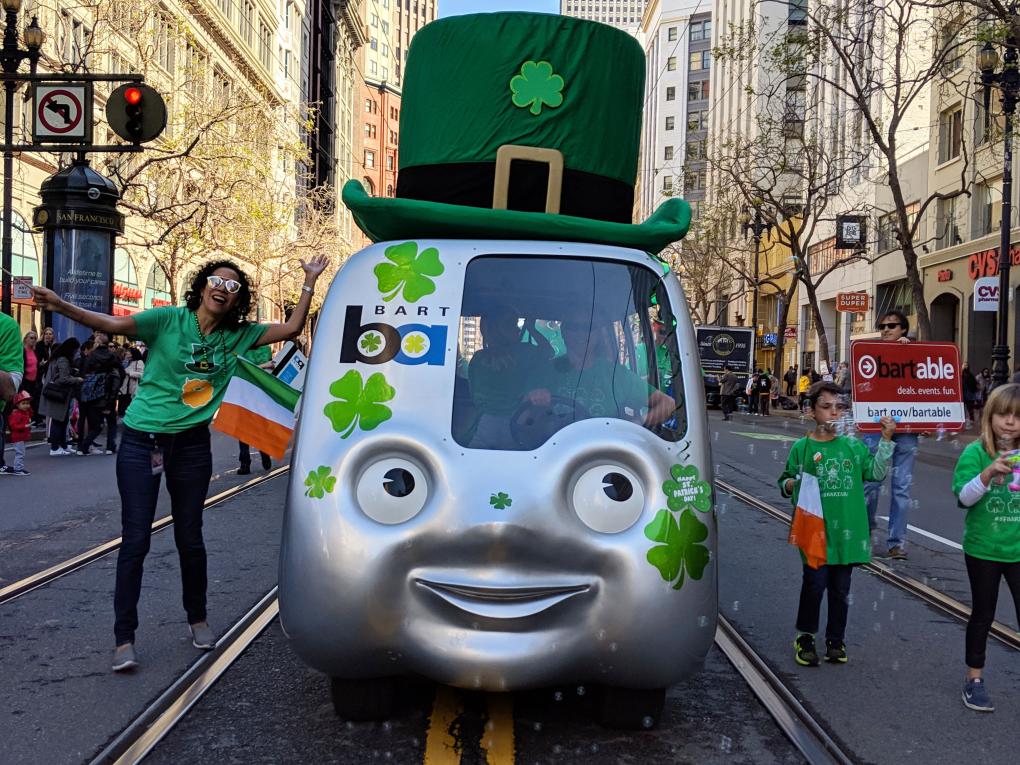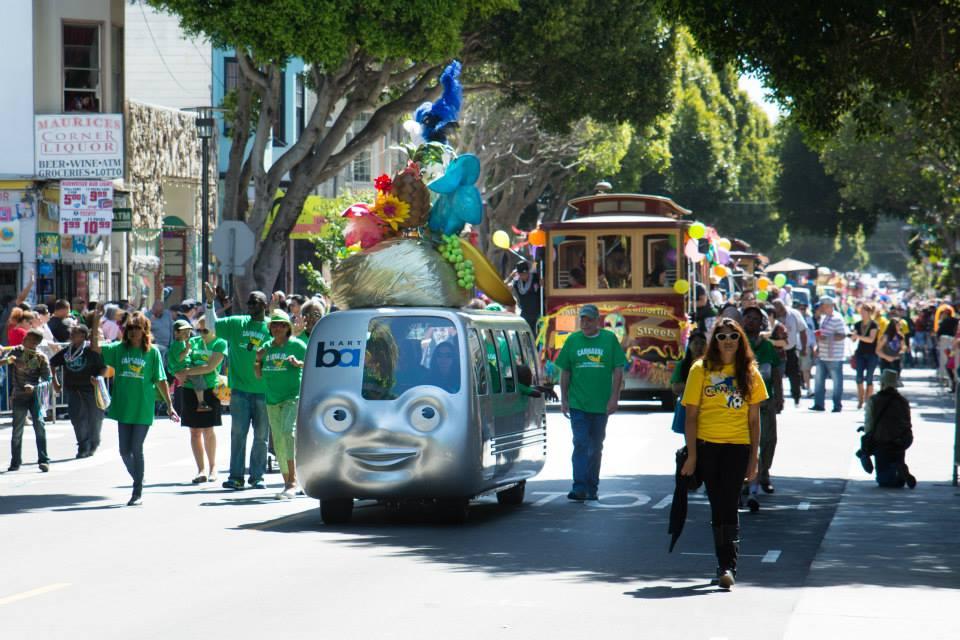Search Results
Temporary Station Closure Alert: Pittsburg Center to be closed March 8-9 for installation of Next Generation Fare Gates
Pittsburg Center Station will be closed on Saturday, March 8 and Sunday, March 9 to allow work crews to install Next Generation Fare Gates at the station. Pittsburg Center must be closed to facilitate this work because it’s typically unstaffed and is smaller compared with typical BART stations. During the temporary station closure, Yellow Line service will continue to run between Pittsburg/Bay Point and Antioch stations. Trains will run through Pittsburg Center without making stops at that station. Additionally, eBART will operate on a new schedule. Trains from Antioch will depart earlier and arrive later than their published departure times to accommodate work on the Pittsburg Center platforms.
Riders who typically use Pittsburg Center are advised to instead use Antioch or Pittsburg/Bay Point stations during the temporary closure. A free shuttle will replace train service between Pittsburg Center and Pittsburg/Bay Point. The free shuttle will take about 10 minutes to travel between stations and will depart every 20 minutes. Riders who still need to get to or from Pittsburg Center can take the free shuttle provided by Tri Delta Transit. Antioch riders who need to get to Pittsburg Center should take BART from Antioch to Pittsburg/Bay Point and then take a free shuttle bus back to Pittsburg Center.
The latest work comes after BART has successfully installed Next Generation Fare Gates at 18 other stations across the system. All 50 BART stations will have new fare gates by the end of 2025. You can learn more about BART’s Next Generation Fare Gate project here.
Millbrae parking garage to expand Reserved Area to accommodate anticipated holiday demand
The Millbrae parking garage will be reconfigured over the next few weeks to accommodate for more reserved parking and the growing demand for single/multi-day reserved parking. The top floor of the garage and a portion of the 4th floor will be converted from Daily Fee to Reserved parking in preparation for the holiday season.
Millbrae is a popular and convenient station for BART riders to park and access the San Francisco International Airport, just a quick 4-minute BART ride away. This change supports customers purchasing single/multi-day reserved parking when they are headed to the airport. Customers may purchase single/multi-day reserved parking at Millbrae on the BART Official App or on BART’s website.
There is still ample parking for Daily Fee parking on the first three floors of the garage. In the next few months, additional Daily Fee parking will become available at the nearby surface parking lot.
The definitive history of the BARTmobile on its 20th birthday
Join us Saturday, July 27, at Orinda Station to toast the BARTmobile on chugging its way to 20 years. More event info here.

The BARTmobile in the 2024 San Francisco Pride Parade. Watch the parade from the BARTmobile's perspective on Instagram.
It has been said that its eyes can see through to your soul. Some have speculated it has the power to improve society. Those who cross its path are known to start acting joyfully and sometimes erratically. It’s even slowed traffic on the Bay Bridge.
If you have found yourself at a major Bay Area parade in the last two decades, chances are high you’ve encountered this mystical being, known as the BARTmobile.
The BARTmobile inspires in passersby what some may deem insane behavior. As it rolls down its given route, paradegoers will scream and shout at the anthropomorphic train as if it were Taylor Swift – “The BARTmobile is here! The BARTmobile is here!” In many instances, adults and children alike will dig through their wallets and pull out their Clipper cards, waving them maniacally at the BARTmobile’s smiling face as it rolls by.
But what exactly is the BARTmobile? And how did it come to have such a hold on the hearts and minds of Bay Area residents?
Jill Buschini, Principal Marketing Representative at BART, has been the official “BARTmobile wrangler” for the past eight parade seasons. She ensures the mobile gets where it needs to go for its bevy of local engagements. (Note: The BARTmobile currently participates only in major Bay Area parades and festivals.)
“When the BARTmobile arrives anywhere, the attention it gets still astounds me. It's incredibly fun to see and be part of!” said Buschini. “Kids and adults alike are transfixed by the small BART train with a face.”
Buschini said even the Golden State Warriors, during their 2022 Warriors Championship Parade, pointed and cheered at the BARTmobile when it caught their eye along the parade route.
There are a handful of crafty, ingenious folks responsible for birthing the BARTmobile. But there is one man responsible for kicking things off. That would be Doug Bartlett, a now-retired BART Principal Marketing Representative.
“Basically, anything that wasn’t normal BART marketing business was thrown to me,” Bartlett said, speaking by phone recently.
In the early 2000s, Bartlett arranged for a series of BART appearances in local parades and happenings. At that time, the Buildings and Grounds department lent BART paradegoers a few logo-emblazoned trucks to walk beside.
“The vehicles were obviously gas-powered,” Bartlett said. “It didn’t seem right. BART is electric!”
The BARTmobile by the Numbers
Weight | Height | Width | Length | Max Load | Max Speed | Battery | Seats |
704 lbs | 6 feet | 5 feet | 14 feet | 1,500 lbs | 15 mph | 12 Volts | 8 |
As a temporary solution, Bartlett began renting three-wheelers. They didn’t really have anything to do with BART, but they were electric, at least.
Then, Bartlett attended an Oakland Athletics game at the Coliseum. At the game, the team had golfcart-sized Chevron cars on display, as well as miniature cars to give to children. A switch flipped in Bartlett’s mind: “I said, ‘We should do this with a BARTmobile.’”
From that day forward, Bartlett set out to make the most fantastical, most adorable, most kid friendly BARTmobile possible.
“The justification was, my god, the San Francisco Gay Pride Parade is seen by more than one million people, just for starters,” Bartlett said. “In one year, a BARTmobile could be seen by more than five million people. It could obviously be justified from a marketing perspective.”
The wheels truly began turning on Halloween 2001, when the Commuter Check Service Corporation, a pre-tax commuter benefit solutions provider, agreed to donate $75,000 to cover the cost needed to construct the entirely electric BARTmobile, as well as a trailer and storage container for it to call home.

Initial concept sketches for the face of the BARTmobile by David Yee.
With funding secured, the design process began. First, playwright and carpenter Tony Pelligrino sculpted a model. Then, designer David Yee created initial sketches and concept art, trying to determine the right face for the roving mascot.
“Some of these drawings were the coolest I’d ever seen in my life -- think ‘Star Wars’ meets Tesla,” Bartlett remembered. “It was nuts! But at the same time, we had to dial it in to make it really look like a BARTmobile.”
Bartlett said the design team went “more for the character, the softness, the cuteness.”
“I wanted future BART riders to look at this as if BART has a personality,” Bartlett said. “We went through many iterations trying to get that face to look happy, but not strange. Some of the drawings were absolutely demonic – like Chucky leading the BARTmobile.”
Bartlett eventually connected with Charlie Bailey of Industrial Light and Magic, the Marin-based visual effects company founded by George Lucas in the 1970s.
“At the time [Bailey] was building the BARTmobile, his crew was building a massive ship for the ‘Pirates of the Caribbean’ movie. It was like 40 feet long!” Bartlett remembered.
Bailey and his colleague Mark Anderson, of the freelance Bailey Design Services team, built the BARTmobile on nights and weekends out of Anderson’s garage. First, they sculpted the face and the rear of the train out of foam and built the middle section from plywood and polyurethanes. They then painted the model and made a mold of the train, which was used to create the fiberglass body. Inspiration for the shape and style of the BARTmobile came from 1958 VW buses and Corvette concept cars.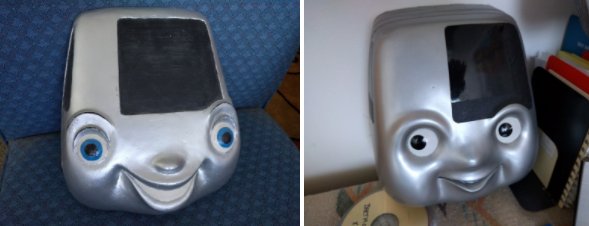
At some point, Anderson and Bailey – who could not be reached for comment – purchased an eight-seater golf cart from Bay Area Golf Carts, which they reinforced with steel. Finally, they built a steel chassis and secured the fiberglass body atop the cart. The last step: painting the BARTmobile with blue bumper strips and Chrysler silver.
Then came the electrical wiring. According to Bartlett, the same Industrial Light and Magic team that worked on “Star Wars” designed and installed the BARTmobile’s electronics. They even converted an actual BART train horn to run on 12-volt battery for the friendly faced vehicle.
“Generally speaking, we had all these incredible guys who oddly loved this project,” Bartlett said. “It was something so different. It was a challenge. And unlike a lot of their projects, it would be around for years to come.”
Bartlett is a musician – he said his current music project is making tunes for robots and aliens – so he was “obsessed” with equipping the BARTmobile with “giant speakers and a monster amp.” Today, he is proud to say that the BARTmobile’s sound system “will rattle your bones” at full throttle, thanks in part to a subwoofer that’s the size of an entire bench – a “must have” for Bartlett.
If you’ve ever witnessed the BARTmobile in a local parade, you will certainly have noticed its “outfits.” The mascot has a variety of specially constructed hats that it wears depending on the occasion: a top hat with rotating “skins” for St. Patrick’s Day, July Fourth, Pride, and the holiday season; a Lunar New Year hat; a Carmen Miranda hat (complete with giant fruit); and a baseball cap for sporting events.

A foam sculpture of the BARTmobile face.
The hats, like all things BARTmobile, have a story of their own. They were made by a team of crafty, creative individuals at Scientific Art Studio, a design and fabrication studio in Richmond that creates everything from museum exhibits to playgrounds and sculptures.
“The BARTmobile was one of those things,” said Ron Holthuysen, the Creative Director and Owner of Scientific Art Studio. “We had a hard time saying no [to the project]. When somebody comes to us, we typically say, ‘Oh yeah, we can do that.’”
To create the hats, Holthuysen began by drawing some concepts. Then, it was a matter of finding the right materials that were “lightweight but also durable,” said Gordon Glasgow, Shop Manager at Scientific Art Studio.
Once they found the materials – they range from heavy cotton to a “very fancy” silk brocade – Glasgow began crafting patterns as well as foam inner structures that would ensure the hats kept their shape and wouldn’t break. What couldn’t be found in stores, the designers made themselves.
“We do basically everything [at Scientific Art Studio],” Holthuysen said. “That’s how we ended up doing BARTmobile hats.”
Construction of the BARTmobile completed in February of 2004. The mascot was unveiled shortly thereafter with a “birthday party,” intended to attract “visibility for marketing programs to gain riders,” according to the run-of-show document for the day. A fife and drum corps kicked off the celebration, which also featured a birthday cake, train-themed CDs (it was the early 2000s after all), and toy train giveaways.
Since then, the BARTmobile has appeared at a multitude of events, driven over 250 miles, and seen by millions of people. To use Bartlett’s phrasing, the mobile has indelibly “put a face on BART.”



Initial concept sketches for the BARTmobile.
But the BARTmobile would never be seen in public were it not for its army of “handlers” – the BART workers who prepare and transport it to its multitude of engagements.
“I started working at BART in 2018. Since then, every time there’s a parade, I’m trying to get on [BARTmobile duty],” said Tomasz Radzikowski, Buildings Worker. Radzikowski estimates he’s delivered the mobile from its home, in BART’s Oakland Shop Annex, to local events at least six times.
“It’s a very exciting thing to do,” he said. “I like it – no, I love it.”
To prepare the BARTmobile for an event, one team of BART workers polish the chassis, charge the electronics, and soundcheck the stereo. This crew is also in charge of decorating, as well as dressing the BARTmobile in its event-specific hat.
From there, a second team loads and secures the BARTmobile on a special trailer. They’ll drive it from the Oakland Shop Annex to wherever it needs to appear that day and unload the 700-pound vehicle. At the end of the event, the process repeats itself in reverse.
“Whenever we drive from the Oakland shops to the city, people will wave at us and ask us to pull over to take pictures,” Radzikowski said. “Sometimes, people on the Bay Bridge will slow down because they’re so excited to see it.”
Radzikowski often hangs around the parade until it’s time to pack the BARTmobile back up. He said the joy and energy from the crowd when they see the mobile rolling down the street is palpable.
“You can see the good vibes and happiness,” he said. “It’s a beautiful feeling to experience.”
Tri-Valley teen’s message to parents: Get your kids on transit!

Enzo Wu, 15, is pictured on a BART train.
Listen to Enzo Wu, Ameen DaCosta, and YouTuber Adam discuss the art of speedrunning on the BART podcast.
Enzo Wu is a BART speedrun world recordholder. He’s also a San Ramon teenager working to “spread the gospel of transit.”
“A lot of people I know haven’t actually gone out and tried transit, and they form their opinions about it from family or social media,” Wu said recently. His longstanding question: How can you know you don’t want to ride transit if you’ve never actually ridden it?
Wu believes public transportation is an important tool for people his age. You don’t have to have a license, and you don’t have to beg your parents to drop you off and pick you up. You can just go when you want to, where you want to (with your parents’ permission, of course).
Wu has been working to get his friends to take transit by inviting them to take BART to an unexplored location and offering to pay their fare and even buy them dinner. That's how much the transit cause matters to him.
“People my age don’t go out and do stuff in public enough,” he said. “They’re not getting out there and interacting with new people offline, and if they’re bored on a weekend, they’ll sit around all day and play videogames."
There’s nothing wrong with videogames – Wu's a big gamer himself – but there’s more to life than screens, he said. Transit is his foolproof balm for boredom. It’s also provided him with plentiful opportunities to practice independence and social skills.
“Going out in public, riding the train, these are activities that build social confidence, which so many kids lack these days,” said Wu (who’s darn mature for his 15 years, if you hadn’t noticed). “Knowing how to take a train or a bus or a ferry is a big step in growing up.”
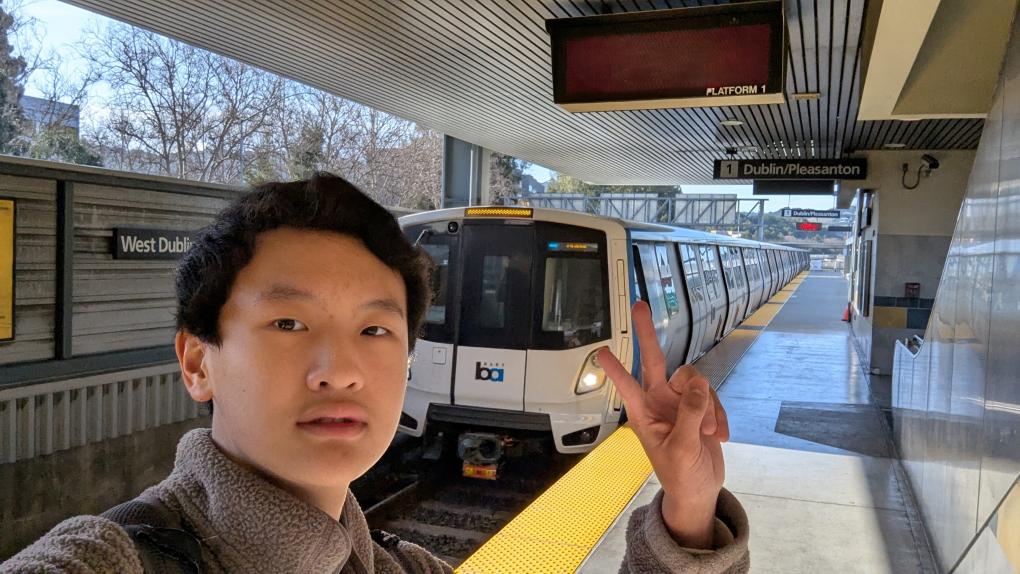
Some of his friends have never done anything alone, let alone take the train from the Tri-Valley to San Francisco, he added.
“We’ll go to a restaurant, and they’ll get stressed because they don’t know how to pay the bill,” he said. “It’s kind of shocking. They lack social skills. But I think transit can bridge that gap. Some of my friends won’t necessarily take transit everywhere like I do, but just getting the idea in their heads is a big step.”
The hurdle isn’t always social; sometimes, it’s parental.
“Some of my friends are game to go into San Francisco and check out a new spot I found,” Wu said. “But then their parents say no.”
“I just find that so sad,” he continued. “Many parents haven’t even tried transit themselves! They see a headline and form an instant opinion. Can you imagine if people did that with airplane travel? If you actually have a decent understanding of traveling by transit, you wouldn’t prevent your kid from riding it, especially during the day and with a group.”
Only two years ago, Wu himself had almost no experience on public transportation. It was his mom who inadvertently gave him the transit bug when she signed him up for 511 Contra Costa’s Pass2Class, a program that gives middle and high school students free bus rides to school for up to two months.
When Wu’s mom first gave him the card with the expectation that he’d at least try taking the bus home from school, he replied: “You want me to take the bus??? Ewwwwww.”
“Enzo, just try it,” she said. “If it’s bad, we’ll find you a carpool.” You know what happened next.
Now, Wu’s getting his parents on the transit train. He regularly shares “good transit news” along with his long list of positive BART and bus experiences. It’s boosted his parent’s confidence in his ability to be out in the world alone, he said. Now they don’t think twice about letting him head out on his own.
Wu has many “transit conversion” success stories to share. Once he gets a friend onboard – that first ride experience is key – it’s not uncommon for the transit ingenue to become transit oriented. He believes he’s “converted” at least a dozen friends directly and dozens more indirectly, thanks to people who watch his speedrun videos and livestreams.
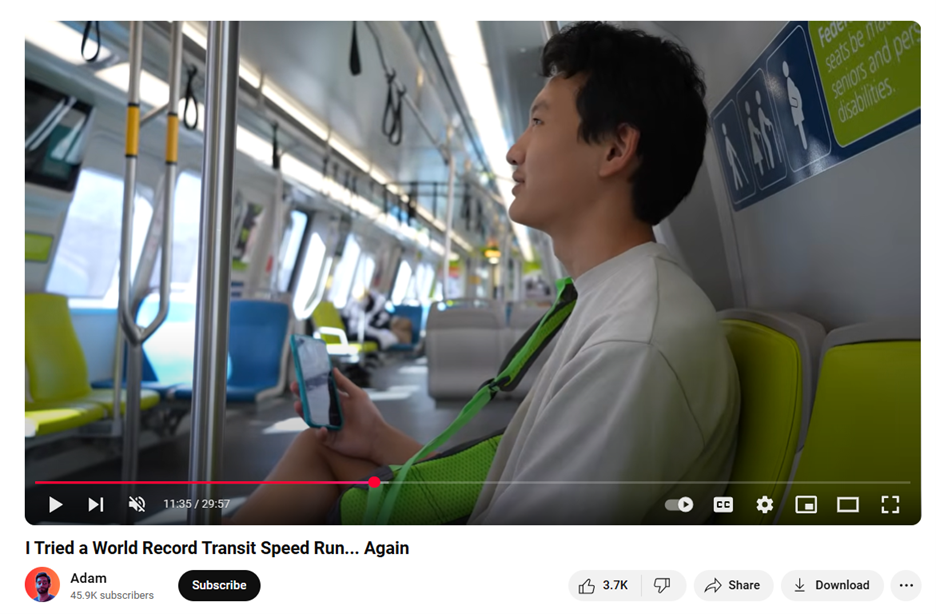
If you’re unacquainted with the term, a speedrun is the total time it takes to travel through all BART stations (or another form of transportation). You can learn more about BART speedrun records here and watch the invigorating video of Wu and YouTuber Adam's new BART speedrun world record here. This past October, the duo speedran the BART system with a time of 5 hours, 9 minutes, and 35 seconds.
“Even just people posting the articles about my speedruns in their Discord chats – people go, ‘Woah, that’s cool Enzo does that. Maybe I should check BART out,’” he said. Now, thanks to the success of his videos, it’s not uncommon for friends to ask to tag along on upcoming runs.
Speedrunning is something of an unconventional hobby (though a solid extracurricular for college apps, Wu hopes). Other than countering some of the transit-negative narratives on social media, the act of speedrunning demonstrates that “if you plan a route in advance, your transit experience can work out well.”
“Once you get experience, planning your trip is fun, simple, and stress free,” Wu said.
And Wu knows it will serve him and his friends as they transition into adulthood.
“Building transit skills now will come in handy many years down the line when you need to get to college, to work,” he said. “That’s why I ride transit, and that’s why I’m advocating for kids my age to do the same.”
“If you can’t ride transit without freaking out, you’ll lose out on all these experiences,” he concluded. “Then, you’ll look back and say, ‘Why didn’t I take transit earlier? Enzo gave me a great opportunity, and I said no!’”
BART offers a 50% fare discount for youth ages five to 18 years old with a Youth Clipper card. Children four years old and younger ride free. Learn more about Youth Clipper cards and other fare discounts here.
Join Link21 at educational events to learn more about train options for a future crossing between Oakland and San Francisco
Link21 continues to invest in a more connected, equitable, and accessible future by working toward the goal of linking the San Francisco Bay Area Regional Transit (BART) and Regional Rail network throughout 21 counties – referred to as the “Megaregion” – in Northern California.
This past summer, community members from the Megaregion participated in a variety of virtual and in-person engagement events to discuss Link21 concepts and potential service improvements. Now this fall, Link21 is offering community members the opportunity to learn more about the type of train service, BART or Regional Rail, that would operate in the future train crossing between Oakland and San Francisco. Attendees will learn how these two options benefit riders, communities, and the Megaregion, plus how they differ. They will also have the chance to provide input to help the Link21 Program Team identify a recommendation for consideration of a Preliminary Project to be advanced by the BART and Capitol Corridor Boards of Directors in early 2024.
“The feedback we receive from people across our Northern California Megaregion will help us meet the needs of our diverse communities,” said Sadie Graham, Link21 Program Director for BART. “We can’t do this alone and need the public to continue being part of the planning process at every step of this generational undertaking.”
JOIN THE CONVERSATION!
Virtual Events
Participate in a virtual event or look for Link21 in your community to learn more and help connect Northern California with better train service for future generations. Visit the Link21 Events webpage for more details.
Online Open House
Starting in early November and lasting approximately 30 days, you can conveniently visit Link21OpenHouse.com anytime, 24 hours a day, seven days a week to learn more and provide input.
ABOUT LINK21
Link21 is a long-range transportation program sponsored by BART and Capitol Corridor to transform the train network serving the 21-county Northern California Megaregion, which includes the greater San Francisco Bay Area, the Monterey Bay area, the Sacramento area, and the Northern San Joaquin Valley.
Link21 will make it more convenient for people to take BART and Regional Rail (commuter, intercity, and high speed) throughout the Megaregion.
Learn more at Link21Program.org.
Installation work to begin April 7 for Next Generation Fare Gates at El Cerrito del Norte Station
The installation of Next Generation Fare Gates is scheduled to begin Monday, April 7 at El Cerrito del Norte Station. The installation process is expected to take approximately two weeks to complete for each of the station’s two sets of gates.
During construction, there will be a barrier around the gates being replaced. The opposite set of gates will remain in service during the installation. There will be signage and additional BART staff to direct riders to the open gates. The work will not affect train service, but riders may experience a few extra minutes wait to pass through the fare gates during peak travel hours.
The latest work comes after BART has successfully installed Next Generation Fare Gates at 25 other stations across the system. All 50 BART stations will have new fare gates by the end of 2025. You can learn more about BART’s Next Generation Fare Gate project here.
Installation work to begin April 9 for Next Generation Fare Gates at MacArthur Station
The installation of Next Generation Fare Gates is scheduled to begin Wednesday, April 9 at MacArthur Station. The installation process is expected to take approximately two weeks to complete for each of the station’s two sets of gates.
During construction, there will be a barrier around the gates being replaced. The opposite set of gates will remain in service during the installation. There will be signage and additional BART staff to direct riders to the open gates. The work will not affect train service, but riders may experience a few extra minutes wait to pass through the fare gates during peak travel hours.
The latest work comes after BART has successfully installed Next Generation Fare Gates at 25 other stations across the system. All 50 BART stations will have new fare gates by the end of 2025. You can learn more about BART’s Next Generation Fare Gate project here.
Minor schedule adjustments go into effect on Monday 8/12/24 to improve service and connections
BART is making minor changes to the schedule beginning Monday, August 12, 2024, to improve key connections and to provide less crowding by better spacing of trains.
Some departure times have shifted by a few minutes, and we encourage riders to check the schedule before August 12th to see if their trip is impacted.
The BART Trip Planner has been updated with the new schedule so riders can start planning their trips using the date August 12, 2024, and beyond. PDF timetables of the new schedule are posted below. BART shared the new schedule with all partner transit agencies in March 2024 to give time for them to ensure schedules are aligned and transfers are timed as best as possible. All Bay Area transit agencies are working together to advance schedule bid alignment (in August and January) as part of efforts to improve transfer timing across the region.
Yellow line adjustments
While the intervals between trains will remain at 8 and 12 minutes, we are swapping the pattern of Pittsburg Bay Point bound and Antioch bound trains to ease crowding on the trains that serve the transfer platform.
Even spacing on Orange and Green lines
Riders on the Berryessa line will experience better train spacing than ever before. The Green and Orange line will still run every 20 minutes, but trains serving the Berryessa line will now be evenly spaced 10 minutes apart. This reduces crowding and offers an option for riders every 10 minutes for those willing to transfer to complete their trip.
Blue to Orange line transfer improvement at Bay Fair
BART will bring back the connection from the Blue line to the Orange line at Bay Fair. In the September 2023 schedule change, riders coming from Dublin and travelling towards Richmond were hit with a 17-minute wait at Bay Fair to make the Blue line to Orange line transfer. Instead, riders were given the option of a very tight transfer opportunity at West Oakland to a Red Line/Richmond train. The much easier connection at Bay Fair will return on August 12th.
BART and Caltrain schedule coordination at Millbrae
Both BART and Caltrain will make changes to improve some of the transfers at Millbrae. The improvements will go into effect when Caltrain launches its electric service on September 21. With BART’s schedule change in August and Caltrain’s schedule change in September, ~85% of all weekday trains will have a transfer between 5 and 19 minutes at Millbrae Station. On the weekend, ~90% of trains will have a transfer between 5 and 19 minutes.
5-19 minutes allows for both systems to be off schedule a bit but still provide a reliable connection. If trains were scheduled with less than a 5-minute wait, delays would frequently break the transfer and result in a longer wait.
Transfers at Millbrae don’t always line up perfectly because Caltrain has four trains per peak hour and two trains per off-peak hour/weekends. While BART has three trains per hour at all times. Both systems are also limited in flexibility due to key system timing points elsewhere.
Transit Coordination
Bay Area transit agencies are syncing schedules in a whole new way with a focus on improving transfers between systems and making schedule changes at the same time. Agencies convened a meeting in March 2024 to share planned changes for mid-August and to look for opportunities to improve transfers. Advancing schedule change alignment is a key priority for Bay Area transit general managers who meet on a weekly basis to make transit more rider-focused and efficient. The major agencies are already working on another iteration of a coordinated schedule change to go into effect in January 2025. These coordinated schedule changes will benefit current transit riders while attracting new riders. Read more about these efforts and see details of the August improvements.
Early Bird Express Bus Service
On August 12, 2024 the following Early Bird Express bus trips served by AC Transit will be eliminated:
| Eliminated Route | Origin/Destination | Operator | Time | Alternatives |
| 706 | Bay Fair to Salesforce via 19th St. | AC Transit | 4:21am | 4:04am 703 bus* 4:45am BART train |
| 707 | Fremont to Salesforce | AC Transit | 3:50am | 4:55am BART train |
*The 703 AC Transit bus from Dublin/Pleasanton Station to Salesforce Transit Center will now depart at 3:47am and will now serve what was previously the 706 with a stop at Bay Fair at 4:04am, then at Fruitvale at 4:20am, then arrive at the Salesforce Transit Center at 4:40am.
View the Early Bird Express page for complete service information.
PDF Timetables
Weekdays
August, 12 2024 Weekday Service for Antioch to SFO (Yellow) Line.pdf
August 12, 2024 Weekday Service for Berryessa_N San Jose to Daly City (Green) Line.pdf
August 12, 2024 Weekday Service for Berryessa_N San Jose to Richmond (Orange) Line.pdf
August 12, 2024 Weekday Service for Dublin_Pleasanton to Daly City (Blue) Line.pdf
August 12, 2024 Weekday Service for Richmond to Millbrae + SFO (Red) Line.pdf
Weekends
August 12, 2024 Weekend Service for Antioch to SFO (Yellow) Line.pdf
August 12, 2024 Weekend Service for Berryessa_N San Jose to Daly City (Green) Line.pdf
August 12, 2024 Weekend Service for Berryessa_N San Jose to Richmond (Orange) Line.pdf
August 12, 2024 Weekend Service for Dublin_Pleasanton to Daly City (Blue) Line.pdf
August 12, 2024 Weekend Service for Richmond to Millbrae + SFO (Red) Line.pdf
*This article was posted on July 22, 2024
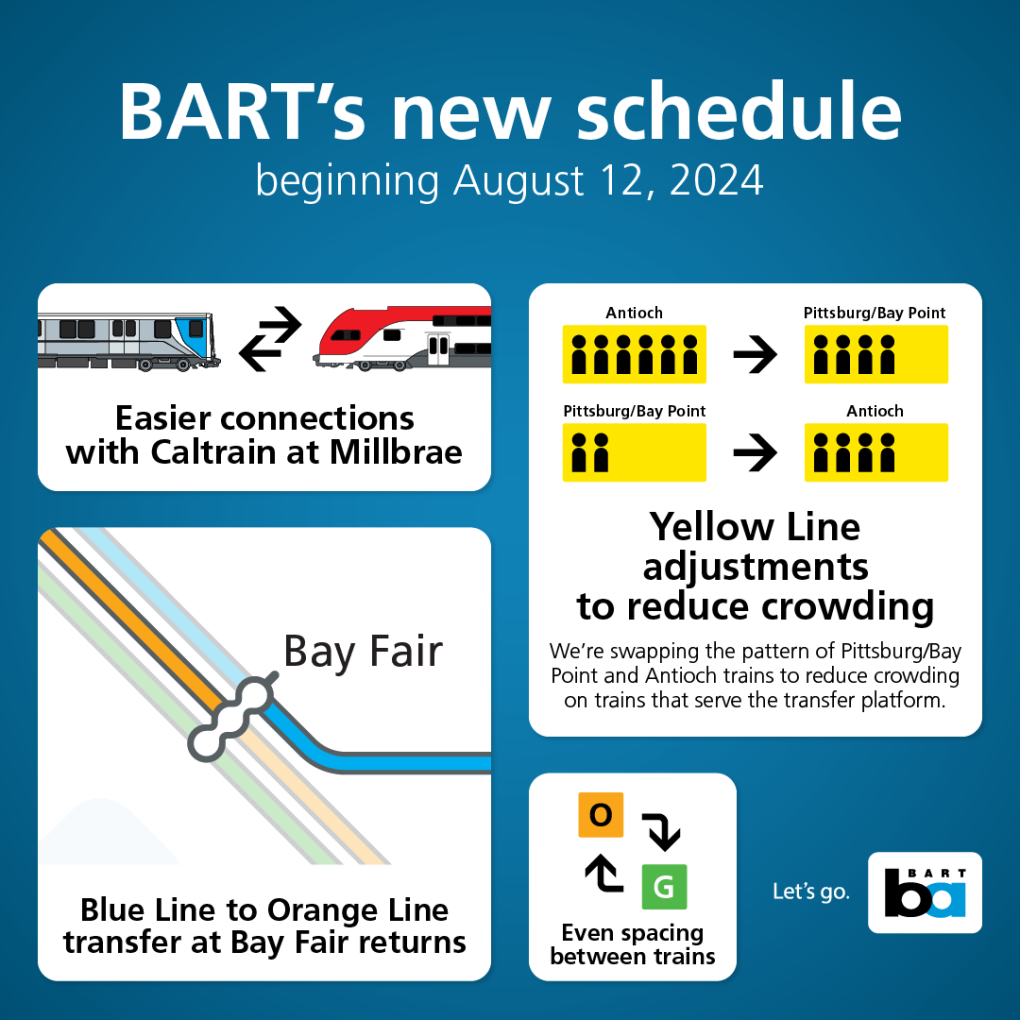
Bay Area history reclaimed: The story of 95-year-old artist Janet Bennett and her longstanding tile artworks at 16th and 24th St. stations
Note: Janet Bennett’s tile murals have come to define the character of BART's Mission District stations, and yet, in the fifty-plus years since the tiles were placed, her contribution has gone unattributed...This Women’s History Month, BART is honored to bring forward the story of the artworks as well as that of the wonderful midcentury artist who made them.
BART will be installing plaques at 16th St. Mission and 24th St. Mission stations to recognize Bennett as the artist behind the character-defining murals.
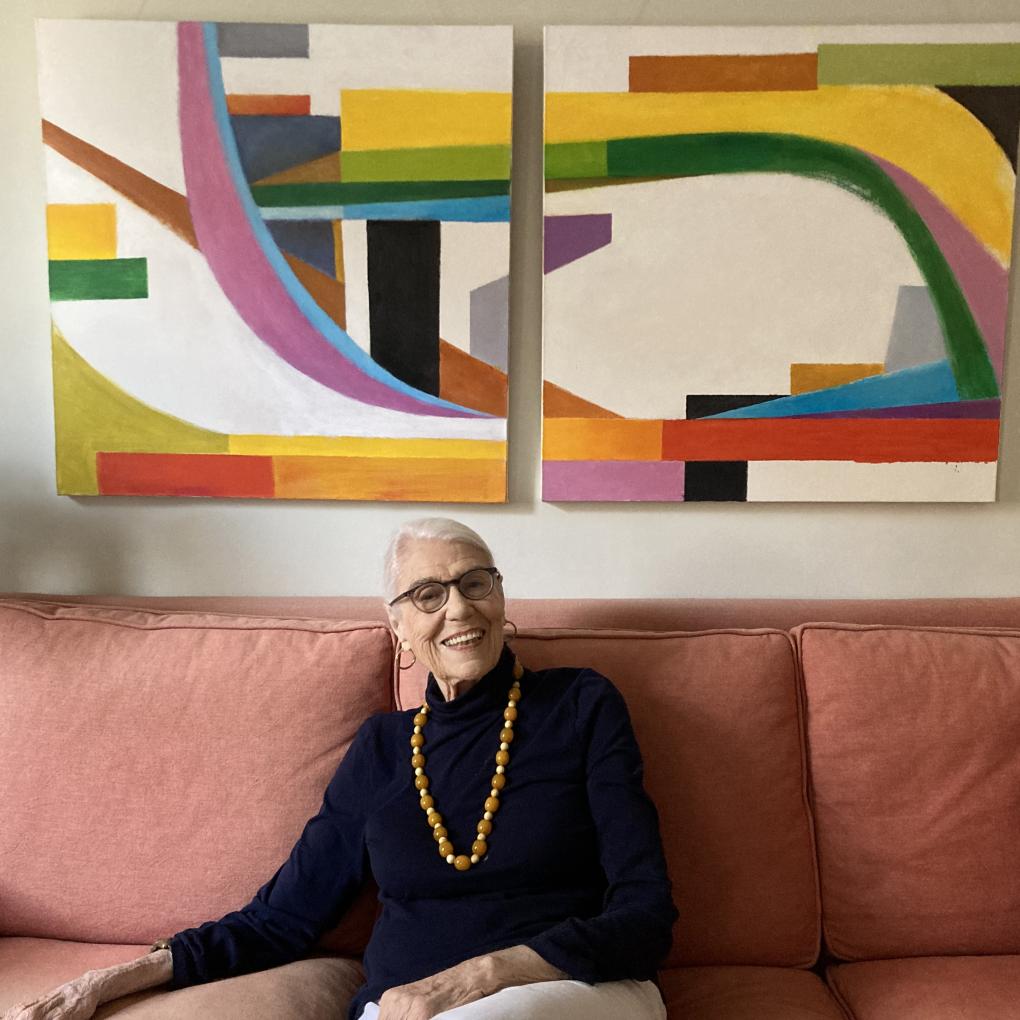
Janet Bennett, the artist behind the tile murals at 16th St. and 24th St. Mission stations, seated in front of one of her paintings in her New York City home.
Every day, thousands of people pass through BART’s Mission District stations in San Francisco. As they enter the fare gates, walk along the concourse toward the stairs, then onto the platform to await their trains, they are walking through history.
It’s a history wrought by many hands over more than five decades: the planners who mapped the system, the architects and engineers who drafted the plans, and the workers who sweated day by day to construct a transit space that would function not just during their lifetimes, but the lifetimes of their children, grandchildren, great-grandchildren, and so on.
BART stations serve a practical purpose, of course. But they are not solely utilitarian spaces. Stories are woven into their floors, their trackways, and their walls. These individual components speak together and alone, and if you take a moment to pause and investigate, they might reveal the stories they contain.
Artist Janet Bennett, now 95 years old and long retired, is a protagonist in the story of 16th St. and 24th St. stations. During the construction of these transit spaces, Bennett was hired by the station architect, Hertzka and Knowles, to design the striking tile murals on the stations' concourse and platform walls. Next time you’re passing through, look around and you’ll find you are surrounded by her tile artworks, from the snaking yellow formations on the platform at 24th St. to the tree-like waves of green and blue that dance on the concourse at 16th St.
“It’s gratifying that these works are still a part of people’s lives,” said Bennett, speaking from her New York City home. “They’ve gone through different lifespans so to speak. I’m happy that my tiles remain and that they’ll be there quite a while longer.”


Bennett's tile murals pictured on the concourses at 16th St. (top photo) and 24th St. (bottom photo).
Bennett’s tile murals have come to define the character of the Mission stations, and yet, in the fifty-plus years since the tiles were placed, her contribution has gone unattributed. Said Jennifer Easton, BART’s Art Program Manager: “As a woman and someone who works with artists all the time, it’s so common to see women artists obscured throughout history.” BART learned about Bennett and her connection to the Mission stations after her daughter, Maria McDonald, called BART Customer Services and told them that “my 95-year-old mother named Janet Bennett should be credited as the designer of the ceramic tile artworks at 16th and 24th St. stations.” She added: “It means a lot to her.” BART verified McDonald's claim via 1971 news clippings from local papers.

This Women’s History Month, BART is honored to bring forward the story of the artworks as well as that of the wonderful midcentury artist who made them.
“She really is a creative genius in my estimation,” said McDonald.
When Bennett was working as a staff and consultant for architectural firms and corporations in the 60s and 70s, she “was constantly breaking the glass ceiling and unconsciously taking on the lead in roles usually reserved for men,” her daughter said.
Bennett acknowledged that during that period, she was the only woman working for these major architecture firms outside of the secretarial staff. Even before then, when she was a student at Cranbrook, an art and design school in Michigan, Bennett said “no one expected that I would be anything but an architect’s wife.”
“It didn’t bother me at the time,” she said. “I was just doing my thing.”
(A relevant side note: Bennett also designed the famous mosaic passages at LAX, and her boss at the time, Charles Kratka, was long credited as the artist behind the works. Bennett set the record straight in 2007 after reading an obituary for Kratka that named him as the designer. She is now widely credited as the artist behind the mosaics. The artistic similarities between the LAX murals and the BART works certainly reinforce her claim.)
When the station architect contacted Bennett about designing the tile murals, she said she was “very, very excited.” Much anticipation and curiosity swirled around this new “Space Age” transit project, and Bennett was intrigued by the idea of leaving her mark on the system.
Upon accepting the assignment, Bennett got to work in her San Francisco studio outlining on paper the concepts for the murals. Once the initial designs were greenlit by the architect, Bennett executed the working drawings, which indicated the placement of every single tile. It was a lengthy and painstaking process.
Bennett said the designs at each station intentionally contrast with one another – there’s the dry, sunny feeling at 24th St. with its terra cottas and yellows and tans, and then the cooler tone of 16th St. with tiles of olive and gray and yellow green.
“One mural is more earthy, while the other is more sylvan,” she said. “Those concepts helped me create the overall program.”
Bennett’s artworks often reference “something from life,” and in many cases, she lets the colors and their relationships to one another inform her pieces. For 24th St., she referenced the vibrant hues of the Mission District and its close cultural ties to Latin America. The horizontal tiles that wrap around the core structures on the platform represent a yellow serpent, she said.
At 16th St., Bennett was influenced by visits to Marin County, its singular “forests, grasslands, and water.”
"Overall, the concern was that the colors worked well together,” Bennett said. “Part of it was motivated by a feeling that I wanted to express."
Bennett frequently traveled to Marin to meet with the tile maker for the project, the historic Heath Ceramics, which was and still is known for its unique glazes and handcrafted tiles. Heath Ceramics was founded by Edith Heath in 1948 in Sausalito, and its architectural tile line had gained acclaim with many architects throughout California by the time Bennett was working in the industry. Bennett said she collaborated closely with Heath to create the color palette for the BART station tile glazes, which she believes were custom made for the project.
Ceramic tiles are expensive, but you will notice that many BART stations incorporate them. That's because the material is durable, easy to clean, and conveys a sense of handcraftmanship, much like the use of wood, unique concretes, marble, and other unique architectural finishes used in the early BART stations. Bennett’s longstanding tile murals are a testament to the durability and timelessness of these materials.
The large ten-inch tiles Bennett used for her project added to its cost, she said. Because they were so large, the tiles sometimes warped during the firing process and had to be tossed out.
The architects of the stations also had something of a bone to pick with Bennett’s decision to use a horizontal tile layout on the core structures of the platform at 24th St.
“The architects said the horizontal tiles complicated the overall layout, and therefore were too time-consuming and costly to use. They said I should change my working drawings,” Bennett said. “I countered that it would cost more to redraw them."
“So,” she said triumphantly, “the horizontal tiles remain.”
After perfecting the drawings and selecting the last tiles, Bennett finally handed the project to the tile layers. The workers installed the tiles one at a time with special care and attention. Their skilled work in tandem with Bennett’s amaranthine designs has ensured that these murals will remain for many years to come.
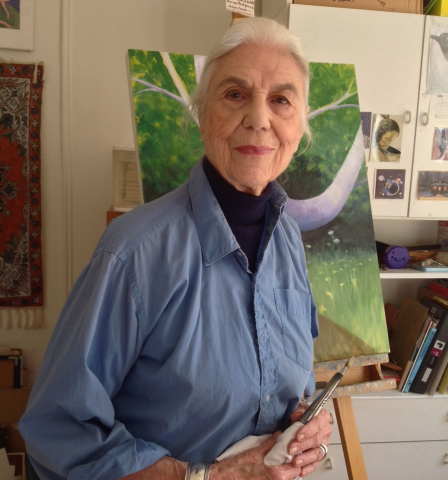
A portrait of the artist.
Bennett has left a mark on many public spaces, including those in the Bay Area where she lived for a time. She said she created works for a variety of local institutions: metal mobiles for the Ice House, a longstanding set of buildings in San Francisco’s Waterfront District; an illuminated acrylic and steel sculpture for Memorex, considered to be one of Silicon Valley’s first tech startups; and even a stage set for a San Francisco Opera gala.
Back in the 60s and 70s, Bennett said her artworks were mostly considered “decorative” because of their functional usage in architectural settings. She thinks the term demeans her work and its artistic value.
“I didn’t think of my work as merely decorative,” she said. “Heck, [by that definition] Michelangelo ‘decorated’ the Sistine Chapel. It’s applied art made to enhance a space and give dignity to it."
Many of Bennett’s artworks have disappeared in time, just like the buildings and businesses that housed them. But she recognizes that "often art is here one day and gone the next.”
“Artwork has its moment,” she said, “and sometimes that’s it. But artwork as part of architecture can exist for centuries.”
Though Bennett’s art practice mostly consists of painting these days, she says she’d consider taking on another mural commission if the right project came along.
“If somebody contacts me because of this article, I could certainly do this type of work again,” she said. “I don’t have the strength to set the tiles, but I certainly have the strength to design some murals.”
Garage at Pleasant Hill Station to close this Saturday
Please remove your vehicle prior to closure On Saturday, October 27, 2007 we will close the parking garage from 7:00 a.m. to 5:00 p.m. That's because our contractors, who are making necessary upgrades to the garage, must turn off the power. We will place signage and traffic barriers at the garage entrances to
